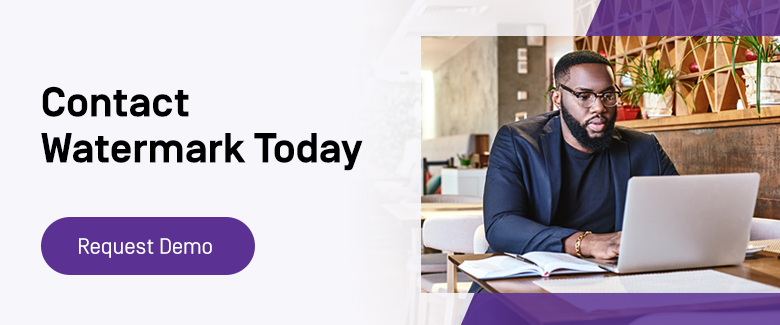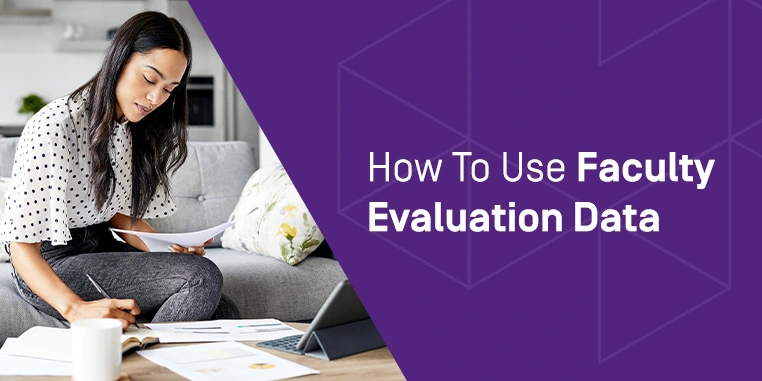
Student feedback and faculty evaluation data are valuable sources of insight. Administrators can use this information for accreditation, student satisfaction, or faculty promotion purposes. Has your institution maximized its data in every possible way?
Data collection and analysis software can help your institution drive far-reaching improvements and use resources and time efficiently. In this guide, you’ll discover the benefits of course and teacher evaluation surveys and how to use faculty evaluation data in your institutional planning and improvement efforts.
6 Ways to Use Faculty Evaluation Data at Your Institution
Most higher education institutions understand the importance of course and teacher evaluation. Faculty evaluations and surveys that solicit student perspectives on their learning experiences are critical assets. Institutions can gather student feedback on teacher performance and course effectiveness to make concrete improvements at the classroom, course, and department levels. Course and teacher evaluation data provides a valuable basis for institutional planning and progress.
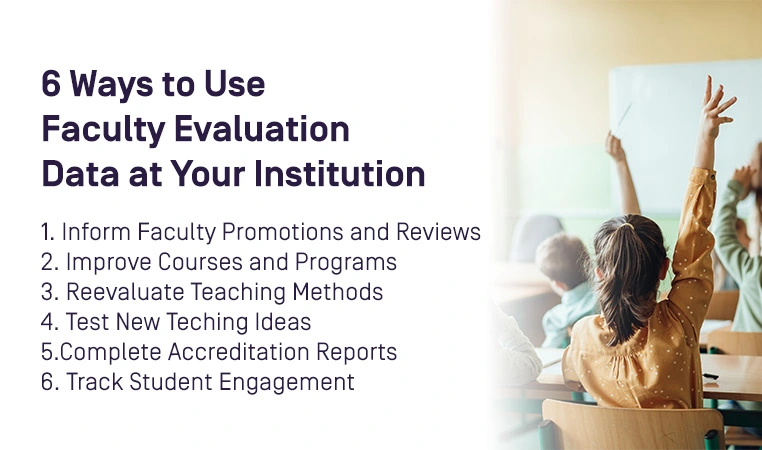
Higher education institutions have found several actionable ways to turn raw faculty evaluation data into goals for measurable improvement. Information gathered from faculty evaluations can help administrators:
1. Inform Faculty Promotions and Reviews
One of the most significant benefits of teacher evaluation surveys is their ability to inform faculty development and decisions about academic promotions. Administrators consider student satisfaction scores when making decisions about merit, tenure, and promotions. Evaluation reports also help administrators evaluate faculty and teacher performance over the years. By pulling reports on teacher performance and comparing them with others, administrators and other institutional decision-makers can gain better insights into teaching quality.
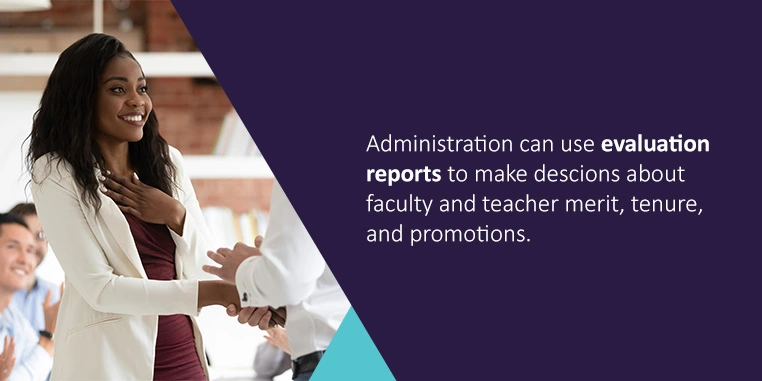
Evaluation data also helps higher education institutions tell faculty stories. When administrators can access faculty achievements and records of scholarship — like articles, books, or published research — from within a system, they can share it with others who in turn can champion these accomplishments and the impact faculty are having. For example, communications and alumni engagement departments can use this information to highlight faculty achievements to boost the school’s image and strengthen campus culture.
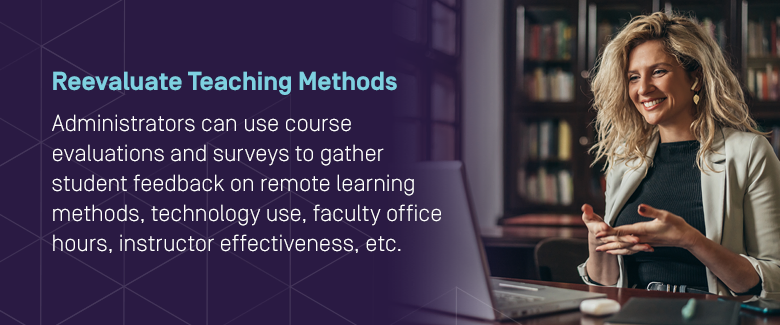
2. Improve Courses and Programs
Course improvement is another of the key benefits of instructor evaluation. Student suggestions in any format are beneficial, although a well-designed evaluation software goes a step further. Evaluation data collection software translates responses from surveys into actionable steps for improvement. This kind of software converts course and teacher evaluation data from feedback into insights and distributes those insights quickly to administrators and faculty so they can more effectively drive progress.
Administrators can use this trend information on students’ experiences to inform the institution’s growth plan or make adjustments at more granular levels. Faculty evaluation surveys also benefit teachers as they guide curriculum development and refine their courses and programs to provide the best learning experience possible. Through survey data collection, administrators can collect deep insights into programs, instructors, and the entire campus experience.
3. Reevaluate Teaching Methods
Teacher evaluation data can be an insightful input for measuring the effectiveness of instructional practices and modalities. Administrators can use faculty evaluations and surveys to gather student feedback on remote learning methods, technology use, faculty office hours, instructor effectiveness, etc.
When administrators and faculty gather enough data through significant response rates, they can use it to reevaluate teaching methods and practices. Administrators may also use student feedback to inform course and instructor assignments.
Faculty, teaching assistants, and administrators can also examine reports from these surveys more quickly when they can rely on automated distribution. Quick access means you can take action fast to benefit the current student population, not just the cohorts to come. With access to faculty evaluation reports at the individual and institutional levels, teachers and administrators can analyze trends over time to evaluate the effectiveness of teaching methods and classroom tools.
4. Test New Teaching Ideas
Multiple surveys throughout the term enable educators and administrators to gather student responses frequently. This is especially helpful as teachers implement new teaching ideas or practices.
Mid-unit surveys are an excellent way to improve student engagement. For instance, Swinburne University administrators used multiple student surveys to pivot and adjust new practices during the semester. Administrators created single-unit surveys that measured effectiveness on a smaller scale. This practice enabled swifter student satisfaction feedback on courses. Teachers could also access results immediately after the surveys closed, allowing them to break down input and switch methods throughout the semester as needed.
5. Complete Accreditation Reports
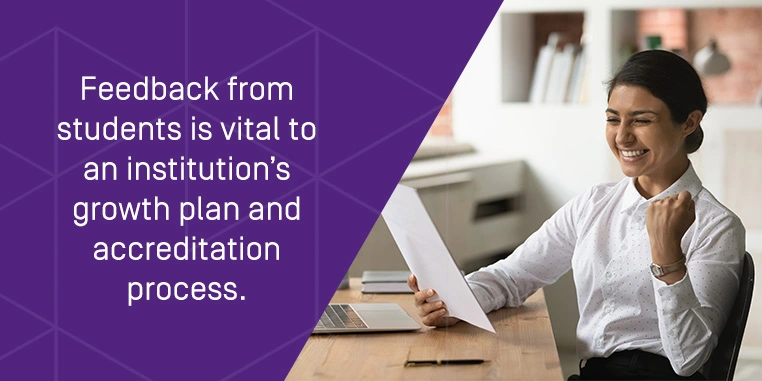
Preparing for an accreditation peer review is a lengthy process requiring exhaustive data collection and reporting. Student feedback on courses and instructors is essential for writing a higher education institution’s growth plan, a vital component of the accreditation process. This indirect measure of student learning outcomes attainment helps the accreditation team authenticate your claims and observe whether your planned improvements were successful.
Faculty reviews are also relevant here, helping to ensure that you have a routine method of reviewing and acting upon feedback on faculty performance. This routine guides faculty development in support of your institutional mission and student success objectives.
Administrators should begin gathering student feedback and faculty evaluation data before their next accreditation peer review visit. Begin keeping track of information in faculty evaluation surveys as early as possible and keep all the data in one place. This practice simplifies writing the institution’s growth plan.
6. Track Student Engagement
Institutions also use student survey feedback to measure and understand student engagement with their programs, services, and the institution overall. Students are a valuable source of feedback on teacher performance, course effectiveness, and program accomplishment. And they can be a great window into the risks and barriers to success that students might be experiencing, and what you can do about it. Institutions should jump on the opportunity to gather data on student engagement through surveys.
Take Effectiveness To the Next Level With Technology
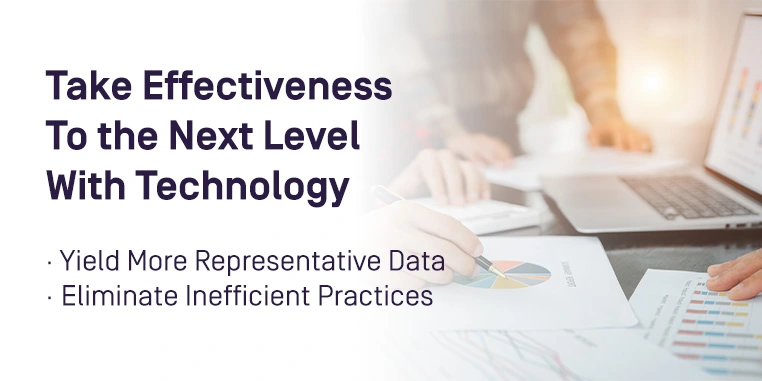
Yield More Representative Data
The most reliable results and meaningful insights come from larger data sets. Higher education institutions need robust student response rates to faculty evaluations and surveys. Simplify responses with software that lets students submit responses from their mobile phones or your LMS. You can also enable alerts and reminders through the LMS or require a response before students can view grades.
Faculty evaluations and surveys should be accessible to students. Some institutions release evaluations in multiple languages to encourage responses. These strategies can increase response rates and gather richer data. For example, Emory University used faculty evaluation data to consolidate course and instructor surveys, smoothing the student experience.
Eliminate Inefficient Practices
Simplify administrative practices at your higher education institution with an innovative, centralized location for collecting and measuring data. Repeatable course evaluations can eliminate hours of inefficient manual processes. Evaluation software replaces reams of paper records and integrates fully with other institutional platforms like Canvas, Blackboard, D2L, and Moodle.
Faculty evaluation software also requires little IT involvement. Administrators can customize surveys on their own, reaping the benefits of professor evaluation surveys without needing extensive training. With some of the noise of paperwork gone, you can collect data and run reports without manual processes. This impact is significant for faculty and administrators, who can spend less time on operations and more time on improvement.
Request a Watermark Demo Today
Data-driven insights empower your institution to accomplish more with innovative data collection and management. Designed for higher ed, Watermark software solutions empower administrators to drive improvement efforts. For over 20 years, we’ve provided higher education institutions worldwide with an intelligent, centralized center for collecting and managing institutional data to drive improvement.
Watermark Course Evaluations & Surveys gives your institution the tools to improve survey response rates and drive action to improve the educational experience from students through adjustments to courses, programs, instruction, services, and more. Access insights, trend information, and course-specific reports so you can leverage student feedback that helps you promote improvement across every department.
Watermark Faculty Success helps faculty and administrators save significant time on faculty activity reporting with data collection, process management, and reporting tools built specifically for this purpose, and for numerous faculty data needs. With the integration between the two, you can automatically incorporate that course and instruction feedback from students as an important input in your faculty review processes.
Contact us today to learn which solution is right for your institution. You can also explore our case studies for more examples of higher education institution success.
